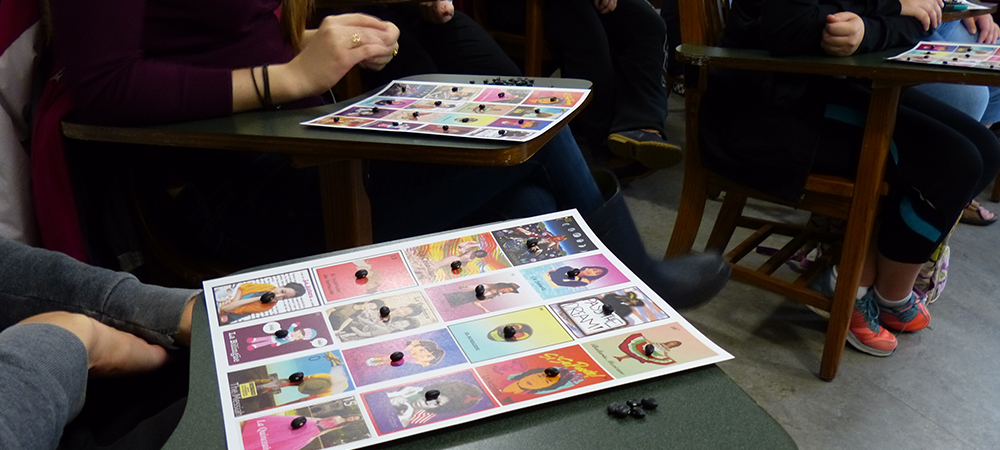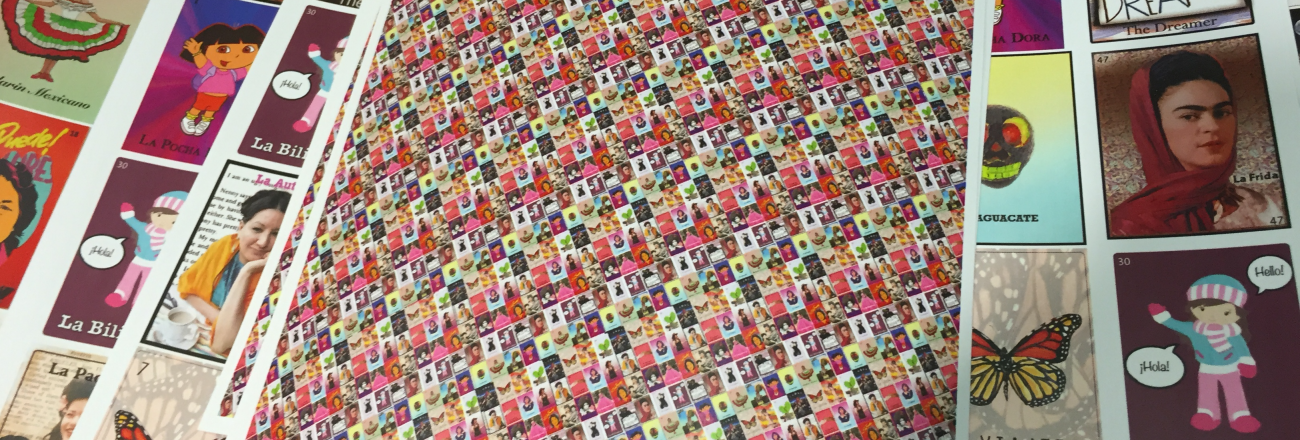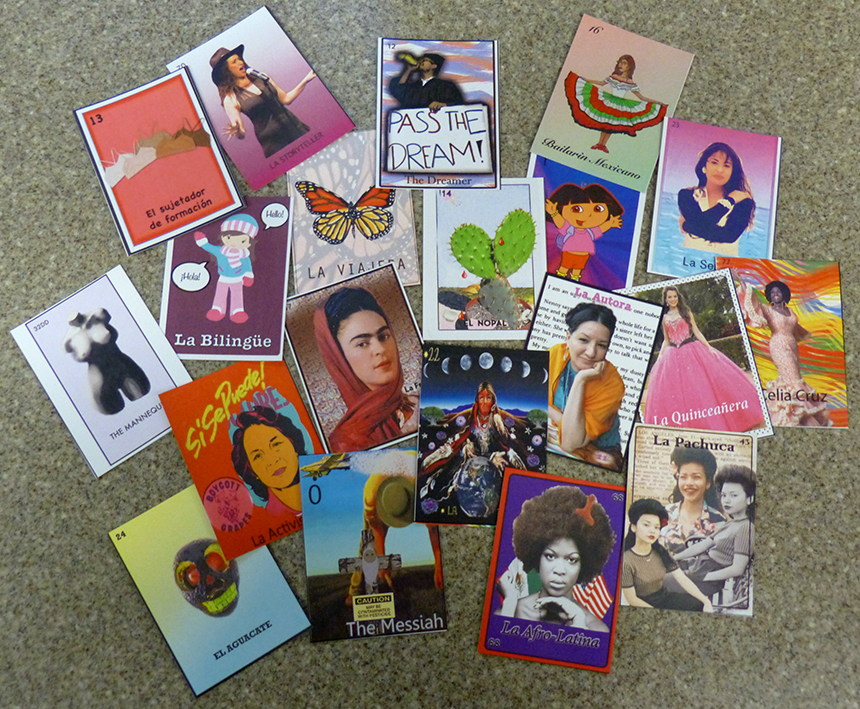Submit New Projects Here

Among many other subjects, the Woman and Popular Culture course (WGST 216) explores how representations of women in popular culture can promote or challenge stereotypes and other perceptions. In Fall 2015, Professor Irene Mata asked her students to create their own Lotería cards, so the students could experience creating their own popular cultural text to challenge existing representations.
“The game of Lotería is a popular cultural text that offers a snapshot of the power images have in creating meaning. While the traditional Lotería board offers pictures of mundane and everyday objects, it also includes pictures that are rife with problematic stereotypes and oppressive imagery. In using the board as a site of reference, students create their own playing card based on the larger class discussion of the importance of responsible representation. By making our own Lotería board, we collaboratively turn the board into a site of opposition, a site that provides alternative and positive representations of Chicanas and Latinas. The project offers students an opportunity to see first hand how representation matters and the role that cultural producers play in creating oppositional images to negative stereotypes.” ~Irene Mata

Lotería is the Spanish word for lottery. It is a game of chance, similar to bingo, but instead of using numbers on ping pong balls, the caller (cantor, or singer) randomly selects a card from a special deck of 54 and announces it to the players by its name, sometimes using a riddle or humorous patter instead of reading the card number. Similar to bingo, players with a matching card image on their board cover it with a marker and the first player with their chips in any previously specified pattern shouts "¡Lotería!" (Lottery!) or "¡Buenas!" (Good!) and is the winner.

Each student and the professor created a single card to form a small deck. While students attended a Photoshop workshop, they were not required to use Photoshop to create their cards, and creation techniques varied from hand drawn and scanned to PowerPoint or MS Word to Photoshop and Illustrator. Rebecca Darling then collected the cards and did some follow-up editing to make sure they were all the same physical size for printing. She also designed tablas, the boards used to play Lotería.
Katherine Ruffin in the Book Arts Lab generously helped cut the cards into decks. On the last day of class, everyone celebrated by playing Lotería. Each student received a copy of her own card and a single tabla. The rest of the files were shared digitally, so students could print out a full deck of cards and tabla set on their own and, if they chose, they could create additional cards to expand the deck further. A complete class Lotería deck and a full set of cards are available to check out from the Clapp Library.
These cards were inspired by the desire to create positive images of Latina bodies in cultural productions. Some images were created to honor important women in Chican@/Latin@ history--both real and imagined--while others referenced themes and topics discussed in the class. All offer a different interpretation of Chican@/Latin@ bodies. What a better way to insert strong figures into our histories than in a well-known and loved game! - Irene Mata
Professor Irene Mata will be teaching this class again in Spring 2017. The new cards will supplement the existing deck to continue expanding the game.
Faculty: Irene Mata
LTS Staff: Rebecca Darling, Katherine Ruffin, Emily Belanger
Keywords: games, board games, WGST, Latino, Latina, Latin@
